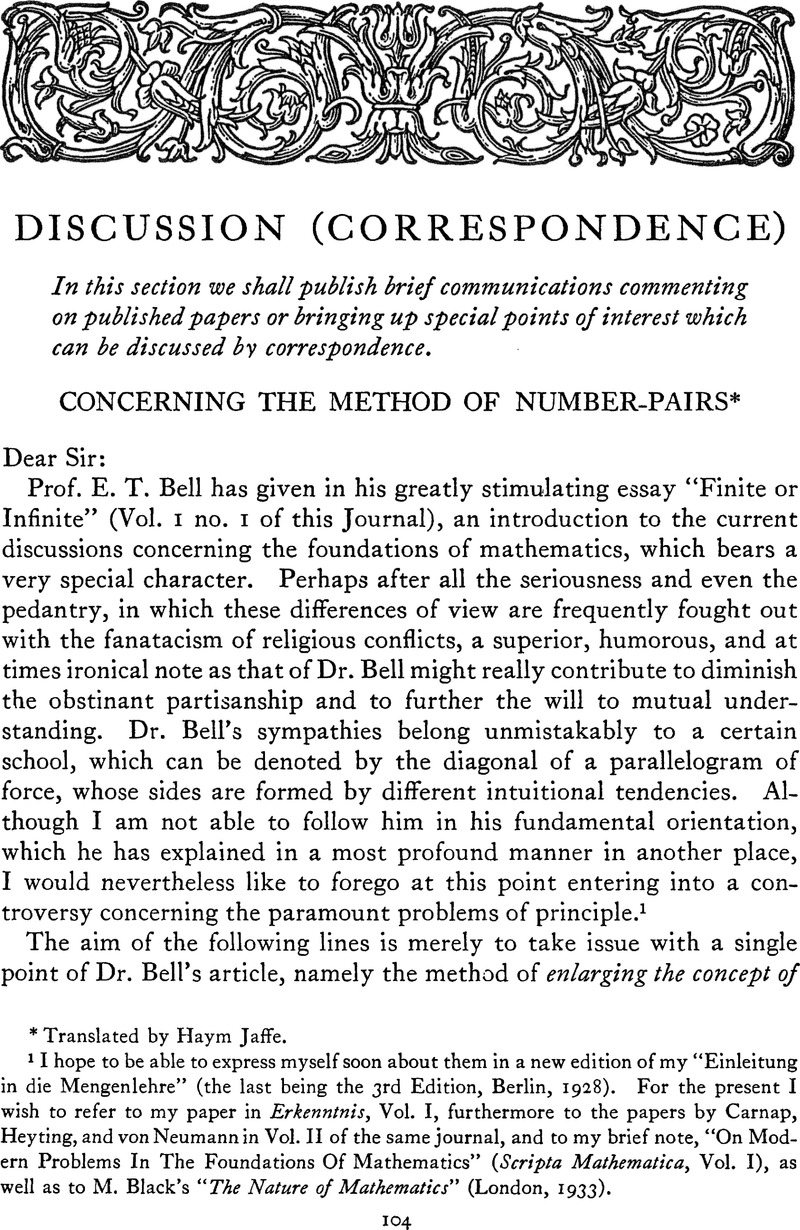Article contents
Concerning The Method of Number-Pairs
Published online by Cambridge University Press: 14 March 2022
Abstract

- Type
- Discussion (Correspondence)
- Information
- Copyright
- Copyright © The Philosophy of Science Association 1935
References
∗ Translated by Haym Jaffe.
1 I hope to be able to express myself soon about them in a new edition of my “Einleitung in die Mengenlehre” (the last being the 3rd Edition, Berlin, 1928). For the present I wish to refer to my paper in Erkenntnis, Vol. I, furthermore to the papers by Carnap, Heyting, and von Neumann in Vol. II of the same journal, and to my brief note, “On Modern Problems In The Foundations Of Mathematics” (Scripta Mathematica, Vol. I), as well as to M. Black's “The Nature of Mathematics” (London, 1933).
2 On this occasion permit me another remark of detail: on p. 42 Dr. Bell renders the translation of the famous Cantorian definition of an aggregate (which is soon after quoted verbally). At the same time the words, “Our intuition or our imagination” have according to their meaning been introduced in a wrong place. These words refer in Cantor to the origin of objects (consequently an entirely subordinate point), and not the central act of comprehension of the whole.
3 Incidentally Gauss did not die until Feb. 23, 1855.
4 Compare with reference to the content and the criticism of the Announcement, my essay “Materialien für eine wissenschaftliche Biographie von Gauss” which appeared in Vol. VIII, “Zahlbegriff und Algebra bei Gauss” (printed in the supplement to the Nachrichten der Gesellschaft der Wissenschaften zu Goettingen, Math. phys. Klasse, Jahrgang 1920.
5 Gauss' Werke, Bd. X., p. 106.
6 Transactions of the Irish Academy—vol. 17, p. 293 ff. ... The treatise at first remained unnoticed, and became known to a larger circle first through Hamilton's Preface to his Lectures on Quaternions (Dublin, 1853). Incidentally in an investigation not published by him and probably originating as early as 1819 (published in Gauss's Werke, Bd. VIII, p. 357 ff), Gauss worked with quaternions even before Hamilton, and introduced them as “combinations” of four real numbers without however as much as throwing a side glance on arithmetic, in his investigation devoted to “Mutations of Space.”
- 1
- Cited by


